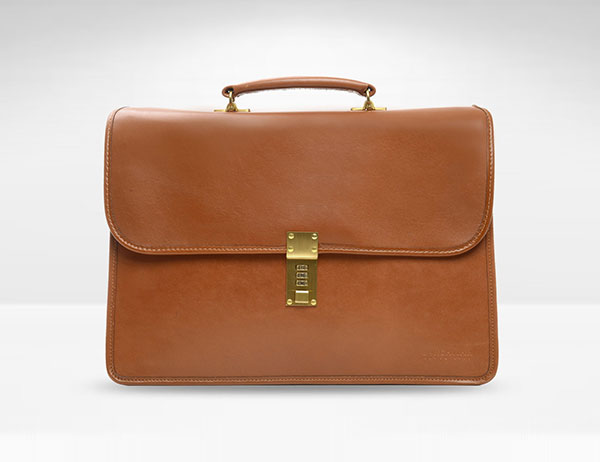A great briefcase can launch you into the corporate hemisphere faster than you can say, “Good morning Mr. CEO”. But the wrong briefcase? You can crash and burn like Enron. So, here are three things to look for and three things to avoid.

Items of briefcase should attention:
-
Style + Materials
Taller and more powerful folk get promoted. It’s science. The job of a great briefcase is to set you apart from the herd, help you get promoted or win that major client. Choose a briefcase that matches the environment you’re in: for corporate environments black is still the new black, although a gentleman can wear brown when going to town. For more creative environments you can experiment with colors or form.
Unless you plan on buying a new briefcase every three months, your briefcase should get more beautiful as it ages too. There’s a market for vintage briefcases and it’s easy to understand why: they still look great. You will generally find great patina in great materials: thick leather, thick canvas and even aluminum. -
Disciplined volume
A briefcase is about your work kit, not your ride to work kit. It should stay skinny and disciplined – the higher up you are, the thinner your briefcase will be – and remain focused on your work tools. Figure out what to definitely bring along to work and what’s not absolutely necessary. For groceries, shopping sprees, sleepovers and other load-bearing activities: it’s ok, just bring a second bag. -
Protection
Right after having a good briefcase, keeping stuff tidy and protected might impress your superiors just as much. Paperwork all scruffy with coffee stains? Uh oh…
A good briefcase will protect your (company’s) belongings. Inside, your papers need something rigid and flat, whilst your tech stuff, such as laptops and phones, need softer bump-proof protection. Classified paperwork, top-secret paperwork needs another kind of protection: locks and impenetrable structure. And then, of course, there’s the “nuclear football“, which is a league of its own! -
Lack of form
Empty bags generally look horrible on a person. On the other hand, bags which are too full, also look horrible on a person.That’s the reason why all bag product photos on the Interwebs show properly filled bags. With briefcases, this is no different. When you have the chance, buy a briefcase that can stand on its own, doesn’t collapse when there’s little inside and doesn’t look like a bag of spuds when it’s filled more than usual – a great pattern and thick, sturdy materials will help here. -
Cheap Nylon
Nylon is fantastic for backpacks, messengers and tents. For briefcases: it’s not always great. Buy it in high-end ballistic if you’re drawn to it. Canvas, leather, aluminum or even carbon are the more classic options. The only time that there is beautiful patina on a nylon bag is when you have traveled the world, survived a myriad of traveling challenges with your backpack and you still use it. Not at the office. A possible exception perhaps is when you meticulously clean your bag and never ever scratch it along surfaces, so it always looks as if you just bought it. Sorry, most of us are usually too lackadaisical for that. -
Too many pockets
Some briefcases are just over-engineered and have a pocket for everything. Unless you’re a control freak, you’ll lose track of what went where and your briefcase will look more like a utility bag. Don’t buy one. Unless your job resembles MacGyver’s.